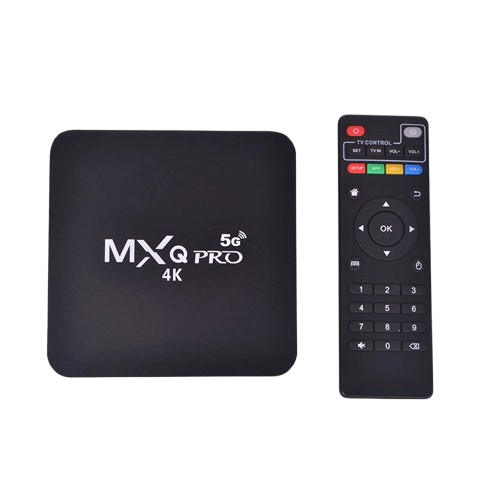This is a short and easy guide you can send to clients. Plain English. Follow the steps in order for best results.
Quick checklist (before you start)
- Mini TV Box is plugged in and turned on.
- TV is on and set to the right HDMI input.
- Wi-Fi name and password ready (or an Ethernet cable).
- Remote or mini keyboard available.
Step 1 — Restart everything (fast first fix)
- Turn off the TV and the mini box.
- Unplug the box power cable and the router power.
- Wait 30 seconds.
- Plug in and turn on the router first. Wait until it is fully online.
- Plug in and turn on the mini box and TV.
This clears temporary bugs and often improves speed.
Step 2 — Use a wired connection if possible
- Plug one end of an Ethernet cable into the router.
- Plug the other end into the Ethernet port of the mini box.
- Test a video.
Wired internet is more stable and reduces buffering and lag.
Step 3 — Improve Wi-Fi when wired is not possible
- Move the mini box closer to the router.
- Remove big objects between them (walls, metal).
- If your router has 2.4GHz and 5GHz, choose 5GHz if the box is close.
- Reduce other heavy downloads while streaming.
This gives a stronger, faster wireless connection.
Step 4 — Free up storage and memory
- Open Settings → Storage.
- Uninstall apps you do not use.
- Delete large media or old files.
- Keep at least 500 MB free for best performance.
A fuller box runs slow and apps lag more.
Step 5 — Close background apps and clear cache
- Go to Settings → Apps.
- Select the streaming app or any slow app.
- Tap Force Stop and then Clear Cache.
- Repeat for other heavy apps.
This frees memory and helps apps run smoother.
Step 6 — Update apps and system software
- Open Google Play Store → My apps → Update all useful apps.
- Go to Settings → About → System Update and check for firmware updates.
- Install updates and restart the box.
Updates fix bugs and improve speed.
Step 7 — Lower video quality when internet is slow
- Open your streaming app.
- Start a video and open player settings.
- Choose Auto, Medium, or SD instead of HD.
Lower quality uses less data and prevents buffering.
Step 8 — Check HDMI and TV settings
- Make sure the HDMI cable fits tightly at both ends.
- Try a different HDMI port on the TV.
- Use a good-quality HDMI cable if the picture lags.
Bad cables or the wrong input can cause video problems.
Step 9 — Keep the box cool and ventilated
- Place the box on a flat surface with space around it.
- Do not stack anything on top.
- If it feels hot, turn it off for 10 minutes.
Overheating slows the box and causes crashes.
Step 10 — Use external storage for big files
- Plug in a USB drive or SD card.
- Move large recordings or media to the external drive.
- Use Settings → Storage to set the drive as external storage if needed.
This frees internal space and speeds up the box.
Step 11 — Safe maintenance routine (schedule for clients)
- Restart box and router once a week.
- Clear app cache once a month.
- Update apps and firmware monthly.
- Check storage every month and remove unused apps.
Step 12 — Factory reset (last resort)
- Back up any data you need.
- Go to Settings → Backup & Reset → Factory Data Reset.
- Confirm and wait for the box to reset.
Do this only if other steps do not fix the problem.
Quick troubleshooting (if problems continue)
- Run an internet speed test on a phone (fast.com).
- If speed is low, contact the internet provider.
- Try streaming from another device to check if the box or the internet is the issue.
- If box still lags on Ethernet and after reset, contact the seller or manufacturer.
